How to Increase Online Sales: Ditch the Agency, Hire an Expert
- Chase McGowan

- 12 minutes ago
- 17 min read
If you want to actually increase online sales, you have to get past the generic strategies and pinpoint what’s really holding you back. More often than not, this means taking a hard look at who’s running your marketing. The traditional agency model, with its layers of bloat and lack of specialized focus, has become a major roadblock to real profitability.
The key is finding a partner whose success is tied directly to your sales—an individual expert, not an overpriced agency spending your marketing budget.
The Agency Trap That's Stalling Your Sales Growth

It’s a story I’ve heard dozens of times. A business owner partners with a big, impressive marketing agency, sold on a polished pitch and promises of massive scale. A few months later? Sales are flat, ad spend is through the roof, and they feel completely disconnected from their own marketing, getting updates from a junior account manager who doesn't know their business.
This is the agency trap. It’s not about a lack of effort; it's a structural flaw.
Large agencies are built with so many layers that your strategy gets diluted and execution slows to a crawl. Your critical business insights get lost in a game of telephone, passed from an account exec to a project manager, and finally down to a junior specialist who is running 20 other accounts and has zero deep expertise in your industry.
When Bigger Isn't Better
This inefficiency has real consequences for your bottom line. I recently started working with an e-commerce client who was stuck in this exact cycle. They were paying a hefty five-figure monthly retainer to a well-known agency, but their results were just…meh.
Here’s what was really happening behind the glossy reports:
Slow Service: Simple campaign tweaks took weeks to implement, completely missing out on real-time market opportunities because they had to go through layers of approval.
Generic Reporting: They got reports filled with vanity metrics—impressions and clicks—but zero clear connection to actual revenue or profit.
Rising Costs: Their cost-per-acquisition (CPA) was slowly creeping up, eating into their margins month after month with no specialist on hand to diagnose and fix it.
They were paying for an agency's overhead, not for expertise. This isn't a one-off story; it's a systemic issue with the bloated agency model. For many, hiring an Amazon PPC agency or a similar large firm seems like the safe bet, but you're trading direct expertise for a brand name and a team of generalists.
The path to profitable growth isn't about bigger teams or bigger budgets. It’s about direct access to specialized expertise—someone who treats your business with the urgency and focus it deserves.
A specialized consultant, on the other hand, cuts out all the layers. You work directly with me—the expert who is actually building and managing your campaigns. This direct line means faster execution, smarter strategies, and a partnership genuinely focused on one thing: increasing your online sales.
Of course, managing your ad spend is a huge piece of this puzzle. Our guide on how to create a marketing budget that works for you, not an agency dives deeper into this. Instead of paying for an agency’s fancy office, your investment goes directly into focused, expert-led work.
Quick Wins Consultant vs Agency
Here’s how a focused Google Ads consultant delivers faster, more profitable results compared to the typical agency approach.
Growth Area | Specialized Consultant Focus | Typical Agency Focus |
|---|---|---|
Strategy & Execution | Direct collaboration with an expert. Strategy is built and executed by the same person, ensuring agility. | Strategy is passed down through multiple layers, leading to slow implementation and miscommunication. |
Reporting & Insights | Focus on profit-driven metrics like ROAS, LTV, and contribution margin. Reports are built to inform business decisions. | Reports often highlight vanity metrics (clicks, impressions) to justify activity rather than results. |
Budget Management | Actively seeks efficiency to maximize every dollar. Success is tied directly to your profitability. | Incentivized to spend the full budget, often without a clear focus on the cost-effectiveness of each dollar spent. |
Communication | Direct, real-time communication. You have a direct line to the person managing your campaigns. | Communication is filtered through an account manager, creating delays and diluting important feedback. |
Ultimately, my model is built on accountability and direct expertise. You're not just another account number; you're a partner in growth.
Mastering Google Ads for Immediate Profitability
Anyone can run ads. The real challenge—and where true expertise comes in—is running ads that turn a profit from day one. So many businesses get stuck in the agency trap, burning through cash on broad campaigns that chase "traffic" but never quite deliver sales. A junior specialist at a big firm simply doesn't have the experience to do more.
If you really want to boost your online sales, you have to stop running ads and start engineering profitable campaigns. This isn't about brute force; it's a surgical approach that bloated agencies, with their layers of management and inexperienced staff, just can't execute with the speed and precision you need. As a specialist, my job is to out-think the competition, not just outspend them.
Surgical Keyword Research That Wins Sales
The entire foundation of a winning Google Ads campaign isn't a massive budget—it's pinpoint keyword research. Big agencies love targeting broad, expensive keywords because they look great on a report, generating tons of clicks and impressions. But as a business owner, you know clicks don't pay the bills.
A real specialist digs deeper. I hunt for high-intent, long-tail keywords. These are the longer, more specific phrases that tell you exactly what a customer wants. Sure, the search volume is lower, but the traffic they bring in is infinitely more likely to convert into a paying customer.
Let's say you run an e-commerce store selling high-end coffee gear. An agency might just go after a broad keyword like "coffee maker."
The Agency Approach: Targeting "coffee maker" throws you into a bidding war with giants like Amazon and Walmart. You'll pay a fortune for clicks from people who are probably just looking for a cheap drip machine, not your premium espresso maker.
The Specialist Approach: As an expert, I find keywords like "best espresso machine for non-dairy milk" or "single dose conical burr coffee grinder." Someone searching for that isn't just browsing—they're deep in the research phase and ready to buy. I can win that customer for you with a much smaller, smarter budget.
This strategy lets you sidestep the Goliaths in your industry and connect directly with a pre-qualified audience that's actively looking for the exact thing you sell.
Crafting Ad Copy That Solves Problems
Once you've found the right audience, your ad copy has to do more than just announce your product. It needs to speak directly to their biggest pain point and position your product as the only logical solution. Too often, agencies churn out generic, feature-focused ad copy that just falls flat.
The most effective ad copy doesn't sell a product; it sells a solution to a problem. It moves beyond "what it is" and answers "what it does for me."
Back to our coffee gear example. What problem is the customer really trying to solve? They don't just want a coffee grinder; they want to stop paying cafe prices and finally get that perfect cup of coffee at home.
Generic Agency Ad: "Premium Coffee Grinder - 15 Grind Settings - On Sale Now!"
Specialist-Crafted Ad: "Tired of Bitter Coffee? Get Cafe-Quality Taste at Home. Our Grinder Unlocks Perfect Flavor."
See the difference? The second ad hits a nerve. It connects with a common frustration (bitter coffee) and promises a desirable outcome (cafe-quality taste). This is the kind of customer-centric messaging that only a dedicated expert, who actually takes the time to understand your business, can deliver.
Structuring Campaigns for ROAS, Not Clicks
How you structure your campaigns inside Google Ads is just as crucial as your keywords and ad copy. A classic agency mistake is to dump dozens of different keywords into a single ad group. It's lazy, and it absolutely tanks your ad relevance, leading to lower Quality Scores and higher costs.
As a specialist, I build campaigns with one goal in mind: Return on Ad Spend (ROAS). This means creating small, tightly-themed ad groups.
Single Keyword Ad Groups (SKAGs): For your most valuable keywords, you create an ad group dedicated to that one phrase. This lets me write hyper-relevant ad copy and send users to a perfectly matched landing page.
Themed Ad Groups: For related long-tail keywords, you can group them by theme. For our coffee shop, you might have one ad group for "espresso machine cleaning" and a totally separate one for "espresso machine accessories."
This meticulous structure ensures that when someone searches for a specific term, they see an ad that feels like it was written just for them. That's the level of relevance that drives conversions and maximizes your ROAS. Of course, none of this works if your tracking is a mess. It's absolutely essential to learn how to fix your Google Ads conversion tracking to make sure every dollar is accounted for.
Outmaneuvering Bigger Brands With a Smarter Budget
At the end of the day, mastering Google Ads is all about agility and intelligence. A large agency is like a giant container ship—it’s powerful, but it’s painfully slow to turn. As an independent consultant, I'm a speedboat, able to adapt to market changes on the fly, test new strategies, and pounce on opportunities as they appear.
By focusing on niche audiences with surgical precision, you can hit profitability far faster. You don't need a massive budget to see an immediate lift in online sales. You need a focused strategy, executed by an expert who is personally invested in your success. That's the playbook for quick wins that big agencies consistently miss.
Turning Clicks Into Customers With a Conversion Blueprint
Getting traffic to your website is only half the battle. A bloated agency might brag about high click volume, but as someone focused on pure profitability, I know that clicks don't pay the bills. The real work—and the secret to actually increasing your online sales—is turning those hard-won visitors into paying customers. This is where a focused, expert-led conversion blueprint separates the pros from the agencies.
Big agencies often jump to recommending expensive, time-sucking website redesigns as their go-to fix. My approach is completely different. I come in like a conversion detective, digging into the data to find the exact friction points that are bleeding you cash. It’s a surgical approach that gets you faster results without the six-figure price tag of a complete overhaul. We're optimizing what you already have for maximum impact.
This simple infographic breaks down how a specialist turns data-driven insights into campaigns that actually make money.
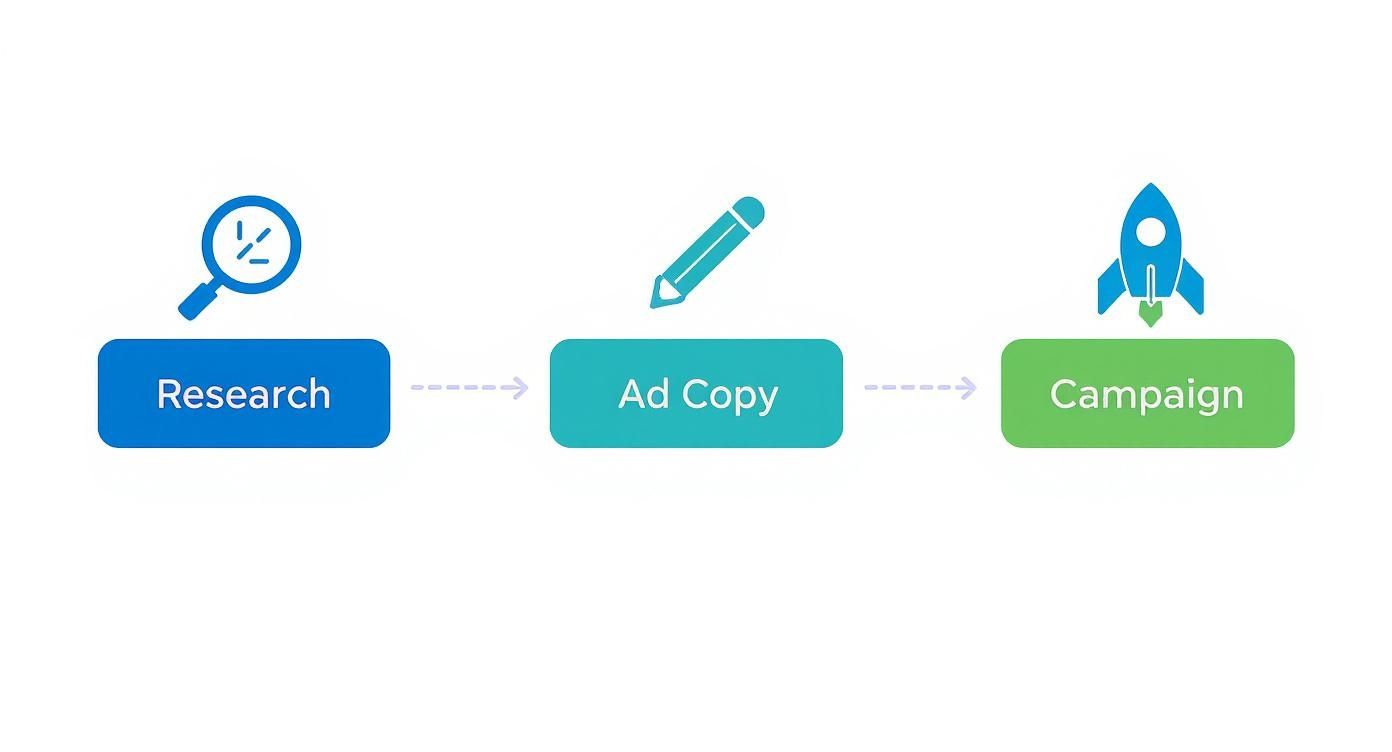
It’s a straight line from understanding your customer to launching campaigns built for sales, not just vanity metrics like clicks.
Simplify the Path to Purchase
Every extra step, every confusing form field, and every single moment of hesitation in your checkout process is a potential lost sale. It’s not a small problem. According to Business Insider, a staggering $4 TRILLION worth of merchandise was left in abandoned carts last year, and a huge chunk of that was recoverable.
Think of your checkout as the final 100 yards of a marathon. You wouldn't put hurdles in front of an exhausted runner, so why are you doing it to your customers?
Guest Checkout is a Must: Forcing people to create an account before they can buy is one of the oldest conversion killers in the book. Always, always offer a guest checkout.
Slash Your Form Fields: Do you really need their middle name and date of birth to ship a t-shirt? Cut it down to the absolute essentials needed to process the payment and get the product to their door.
Show Them the Finish Line: A simple progress bar (like Shipping > Payment > Confirm) manages expectations and makes the whole process feel faster and way less intimidating.
This isn't about some massive technical project. It’s about having empathy for your user—a level of detail that larger, slower agencies often miss while they're busy chasing bigger retainers.
Adopt a Mobile-First Conversion Mindset
Let's be clear: your mobile website is your primary storefront now. If you aren't obsessed with optimizing it, you are actively telling the majority of your potential customers to get lost. The data doesn't lie. By 2025, mobile e-commerce sales are set to hit $2.51 trillion, which is almost 59% of all online sales worldwide. With 75% of e-commerce traffic already coming from smartphones, a clunky mobile site is a direct path to failure.
An agency will send you a report showing high mobile traffic and call it a win. As a specialist, I ask why that traffic isn't converting and then pull out tools like heatmaps to see exactly where mobile users are getting stuck.
Heatmaps are like an X-ray for your website. They show you exactly where people are tapping, how far they're scrolling, and which buttons they’re completely ignoring. This isn't guesswork. It's hard data that points out broken links, confusing navigation, and calls-to-action that are invisible on a smaller screen. This is the kind of deep-dive analysis that agencies rarely bother with, but it’s absolutely essential for building high-converting landing pages that win.
Your 5-Minute Mobile Checkout Audit
You don’t need a team of developers to spot the most glaring conversion blockers. Grab your phone right now and run through this quick audit. Be brutally honest: could someone buy from your site in under two minutes with one hand?
Is your 'Add to Cart' button front and center? It needs to be big, bright, and visible the second the page loads—no scrolling required.
Can you tap everything with just your thumb? Key buttons and form fields should be easy to reach without awkward hand gymnastics.
Are your forms actually mobile-friendly? Does the right keyboard pop up? (Numeric for credit card numbers, email format for the email field, etc.)
How many clicks to buy? Count them. From the product page to the final "thank you" screen, you should be aiming for three to four clicks, max.
How fast does it load? If your page takes more than three seconds to load on a mobile connection, you’re losing people before they even see your product.
Fixing just one of these issues can give you an immediate lift in your mobile conversion rate and put more money directly into your pocket. This is the kind of agile, results-driven work that defines the specialist approach.
Using AI and Personalization Like a Modern Marketer
In the game of growing online sales, speed is everything. It's the one weapon you have that the big guys don't.
Large agencies are notoriously slow. They're bogged down by endless approvals, clunky legacy software, and layers of bureaucracy. This makes them absolute dinosaurs when it comes to adopting powerful new tech. As an independent consultant, my edge is my agility—I can test and implement accessible AI and personalization tools that get results now, not next quarter.
You don't need a million-dollar enterprise software package to create the kind of tailored experiences customers crave. The real opportunity is in using smarter, nimbler tools to give people exactly what they want, right when they want it. This is how I help you outmaneuver bigger competitors stuck in their slow-moving corporate sludge.
The Nimble Advantage Over Agency Bloat
A bloated agency might spend months cooking up a "personalization strategy" that ends with them recommending some outrageously expensive and complicated piece of software. In that same time, as your dedicated consultant, I can have a proven, effective tool integrated and running in a few days.
This speed is the whole ballgame. It means we can start gathering data, learning, and refining the customer experience while the competition is still debating the finer points in a conference room.
This isn't just a theory; it's how I operate. I focus on tools that create a direct line to more revenue, stripping away all the unnecessary complexity. This direct-to-expert model means we can spot an opportunity—like recovering abandoned carts—and deploy a solution immediately. No account managers, no project coordinators, just action.
Modern marketing isn't about having the biggest team; it's about having the fastest, most direct path from insight to implementation. An expert consultant embodies this by using technology as a scalpel, not a sledgehammer.
Practical AI Tools That Actually Drive Sales
Let’s skip the abstract jargon about machine learning and talk about what really works. Here are specific, actionable strategies I use to boost revenue for my clients and create a more relevant, profitable customer journey.
Dynamic Remarketing: This is so much more than a generic "come back!" ad. We can show past visitors ads featuring the exact products they viewed, browsed, or added to their cart. It’s a powerful, personal reminder that feels helpful, not creepy, and it's incredibly effective at turning window shoppers into buyers.
Personalized Product Recommendations: Using simple but powerful AI engines, we can analyze a visitor's real-time browsing and purchase history to suggest other products they'll genuinely love. Think of it as a supercharged "Customers who bought this also bought..." that increases your average order value on autopilot.
AI-Powered Email Flows: Abandoned cart emails are table stakes, but AI kicks them into a whole new gear. We can build automated email sequences that not only remind someone about their cart but can also intelligently offer a small, time-sensitive discount or showcase related best-sellers to sweeten the deal and bring them back.
These tools aren't insanely expensive or complex. They're built for businesses that need to be agile and focused on results, which makes them a perfect fit for a hands-on, expert-led approach.
Case Study: A 22% Lift in Average Order Value
To show you what this looks like in the real world, let's talk about a recent apparel client. They were hitting a wall trying to increase their average order value (AOV). Their agency's big idea? A broad, expensive "brand awareness" campaign.
We went in a different direction. Instead of a massive, vague campaign, I integrated a simple AI recommendation engine right onto their product and cart pages. The tool analyzed user behavior in real-time to display hyper-relevant cross-sells ("You might also like...") and upsells.
The result? Within the first 60 days, their AOV jumped by 22%. It was a direct, measurable win, and we did it with a fraction of the budget the agency wanted to spend.
That's the core difference right there. While an agency is focused on spending your budget, a dedicated consultant is focused on getting you a return. Personalized, AI-driven experiences are no longer a "nice-to-have"—they're essential. Studies consistently show that businesses delivering targeted offers with AI are seeing huge growth, with some finding that personalized emails generate six times higher transaction rates. You can dig into more of these digital commerce statistics on cimulate.ai to see the full picture. This is how you use technology smartly to actually grow your business.
How Shipping and Logistics Can Boost Your Sales
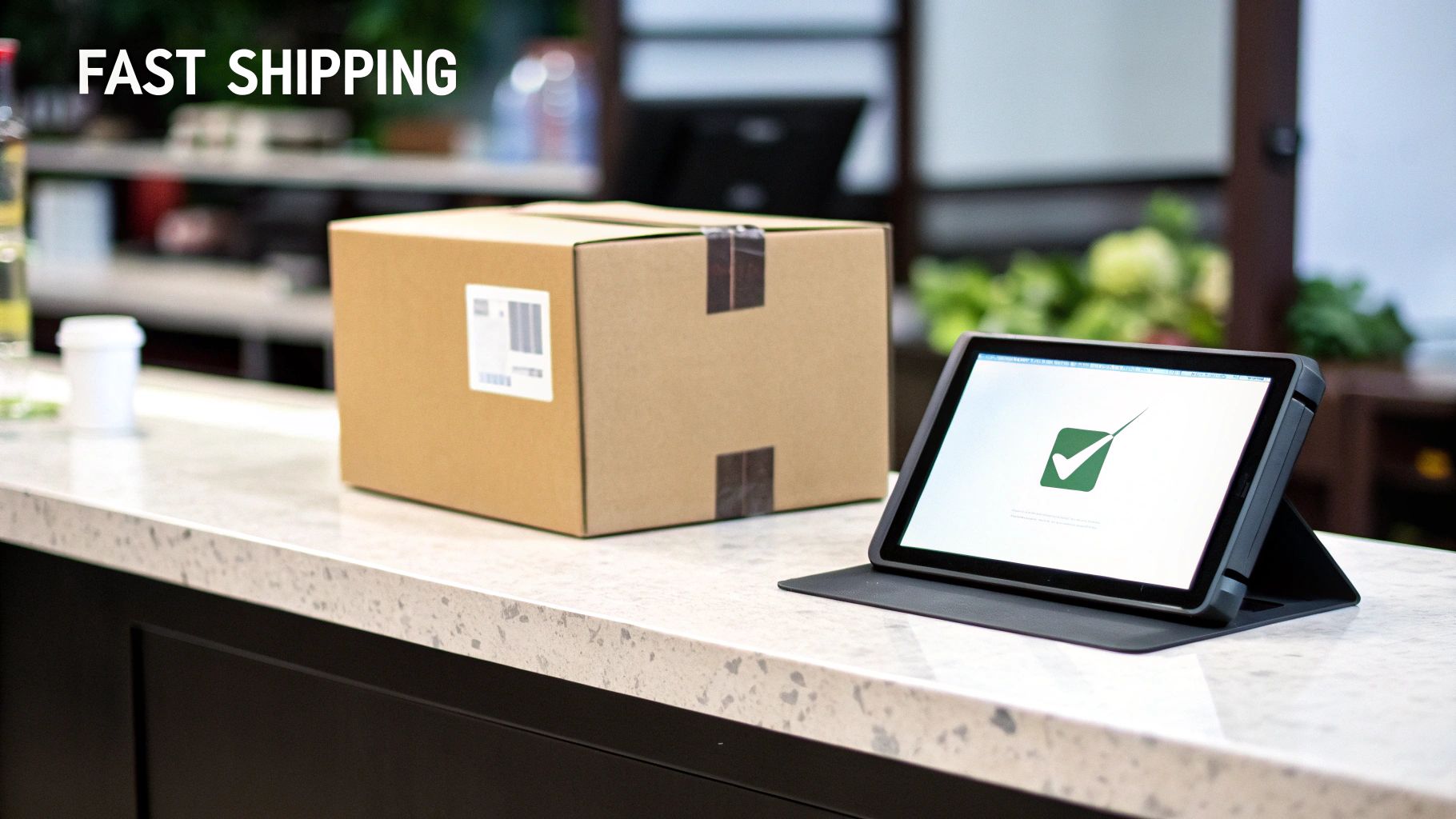
Most marketing agencies live and die by ad clicks. They get you traffic, pat themselves on the back, and call it a day. But as your dedicated sales expert, I know the customer’s journey doesn’t just end on your landing page.
In fact, one of the most critical moments—where so many sales fall apart—happens right before they click "Buy." It's when they see the shipping costs.
A high or unexpected shipping fee is the #1 reason for cart abandonment, full stop. Unlike a bloated agency obsessed with campaign metrics, a dedicated consultant looks at the entire sales process. Optimizing your shipping and logistics is a powerful, often ignored, way to actually increase your online sales.
The Hidden Power of Shipping Transparency
Customers hate surprises, especially when it involves their wallet. The single biggest mistake you can make is hiding shipping costs until the very last step of checkout. It feels deceptive, erodes trust instantly, and sends potential buyers running.
The solution is radical transparency.
Display your shipping policy clearly and proudly on every single product page. Don't make people hunt for it.
A clear, upfront shipping policy isn't just a logistical detail; it's a powerful conversion tool. It manages expectations, builds immediate trust, and removes the primary source of friction that leads to abandoned carts.
I once worked with a client selling home goods who was tearing their hair out over a high cart abandonment rate. Their agency's brilliant solution? Pour more money into remarketing ads.
My first move was simpler. We added a clear banner right below the "Add to Cart" button: "Free Shipping on Orders Over $75. Flat Rate $7.95 Under $75."
The result was immediate. They slashed cart abandonment by nearly 30% in the first month. No new ad spend, no complex site redesign—just honest, upfront communication. That's the difference between a click-focused agency and a holistic sales strategist.
Turning Shipping from a Cost to a Sales Driver
Once you embrace transparency, you can start using shipping as an active tool to grow your revenue. It's not just an expense line on your P&L; it's a psychological lever that can significantly boost your average order value (AOV).
The most effective way to do this is with a "free shipping" threshold. It’s a classic for a reason—it encourages customers to add just one more item to their cart to qualify.
Here’s how to do it right:
Calculate Your Threshold: Find your median order value and set your free shipping threshold about 15-20% higher. This makes it feel like an achievable goal for most shoppers, not an impossible leap.
Make It Visible: Use a dynamic cart notification that pops up with a message like, "You're only $12 away from free shipping!" This gamifies the experience and provides a clear nudge.
Negotiate Carrier Rates: Don't just accept the default shipping rates from carriers. As your volume grows, you gain negotiating power. As your partner, I can help you analyze your shipping data to secure better rates, which you can then pass on as savings to your customers.
Dialing in your logistics is a proven path to growth. Research shows that 61% of online shoppers see free shipping as the top factor in their buying decision, and retailers offering it can see conversion rates jump by as much as 30%. You can discover more insights about e-commerce sales on Shopify's blog.
This data all points to one core principle: a great ad campaign gets them in the door, but a smart shipping strategy is what closes the deal.
Common Questions About Growing Your Online Sales
When you're ready to scale and start looking for the right partner, a ton of questions pop up. The answers usually tell you everything you need to know about the difference between a results-obsessed expert and a slow, expensive agency.
Here are the straight-up answers to the questions I hear most often from business owners just like you.
How Quickly Can I Expect a Real Increase in Sales?
Every business is different, of course, but a dedicated consultant is all about immediate impact. My goal is to get actionable data from highly targeted Google Ads campaigns in your hands within days, not months.
From there, tangible sales growth isn't far behind. We're talking about seeing a real lift within the first few weeks as we aggressively optimize the campaigns and tackle the most critical conversion blockers on your site.
Unlike a big agency’s endless "onboarding" process, I get to work on day one. We target the highest-leverage opportunities first to get you a faster return on your investment. It’s all about profit, not process.
Isn't a Consultant More Expensive Than an Agency Retainer?
This is a classic myth that needs busting. When you hire an agency, a huge chunk of your fee is just feeding their overhead—fancy offices, multiple layers of account managers, and support staff who will never even look at your account. You're paying for their bloat, not for expert work.
With a consultant, your entire investment goes to one thing: an expert actively working to grow your business. Even more importantly, my success is directly tied to your sales growth, not just managing your ad spend. This creates a true partnership focused squarely on ROI, which is almost always a more efficient and profitable choice.
The real question isn’t about the monthly fee; it's about the return on that fee. A low-cost agency delivering zero growth is infinitely more expensive than an expert consultant who actually drives profitable sales.
My Ad Budget Is Small. Can You Still Help Me?
Absolutely. In fact, a small budget is precisely why you need a specialist instead of a big agency. Most agencies will just spread your limited budget too thin across broad, generic campaigns. You’ll get a few clicks, maybe some impressions, but never enough traction to produce actual sales. It’s a fast way to burn cash with nothing to show for it.
I do the exact opposite. We find one profitable, specific niche and we dominate it.
Hyper-Specific Keywords: We go after long-tail phrases that scream "I'm ready to buy."
Tight Ad Groups: We make sure your ad copy is a perfect match for the search query, which drives up relevance and drives down cost.
Aggressive Negative Keywords: We proactively block every irrelevant search we can find, making sure every dollar you spend is aimed at a real potential customer.
This kind of surgical approach maximizes the power of every single dollar. That’s something a "set it and forget it" agency model just can't deliver.
Do I Really Need a New Website to Increase My Sales?
Probably not, and you should be very skeptical of anyone who says you do right out of the gate. A pricey redesign is often an agency's first move because it’s a big, profitable project for them.
Before even thinking about a massive expense like that, a good consultant will focus on optimizing what you already have. Simple, data-driven tweaks can produce a huge lift in sales without the cost and headache of a full rebuild.
We use data to find the real friction points—is it a confusing mobile checkout? Slow page speed? We make targeted fixes that deliver immediate results. It’s about being smart and strategic, not just starting over. For more foundational and overarching strategies, you can also delve into general guides on how to increase online sales.
Ready to stop paying for overhead and start investing in results? At Come Together Media LLC, you work directly with an expert dedicated to growing your sales, not just spending your ad budget. Get a free, no-commitment consultation to receive actionable insights on your Google Ads account today.




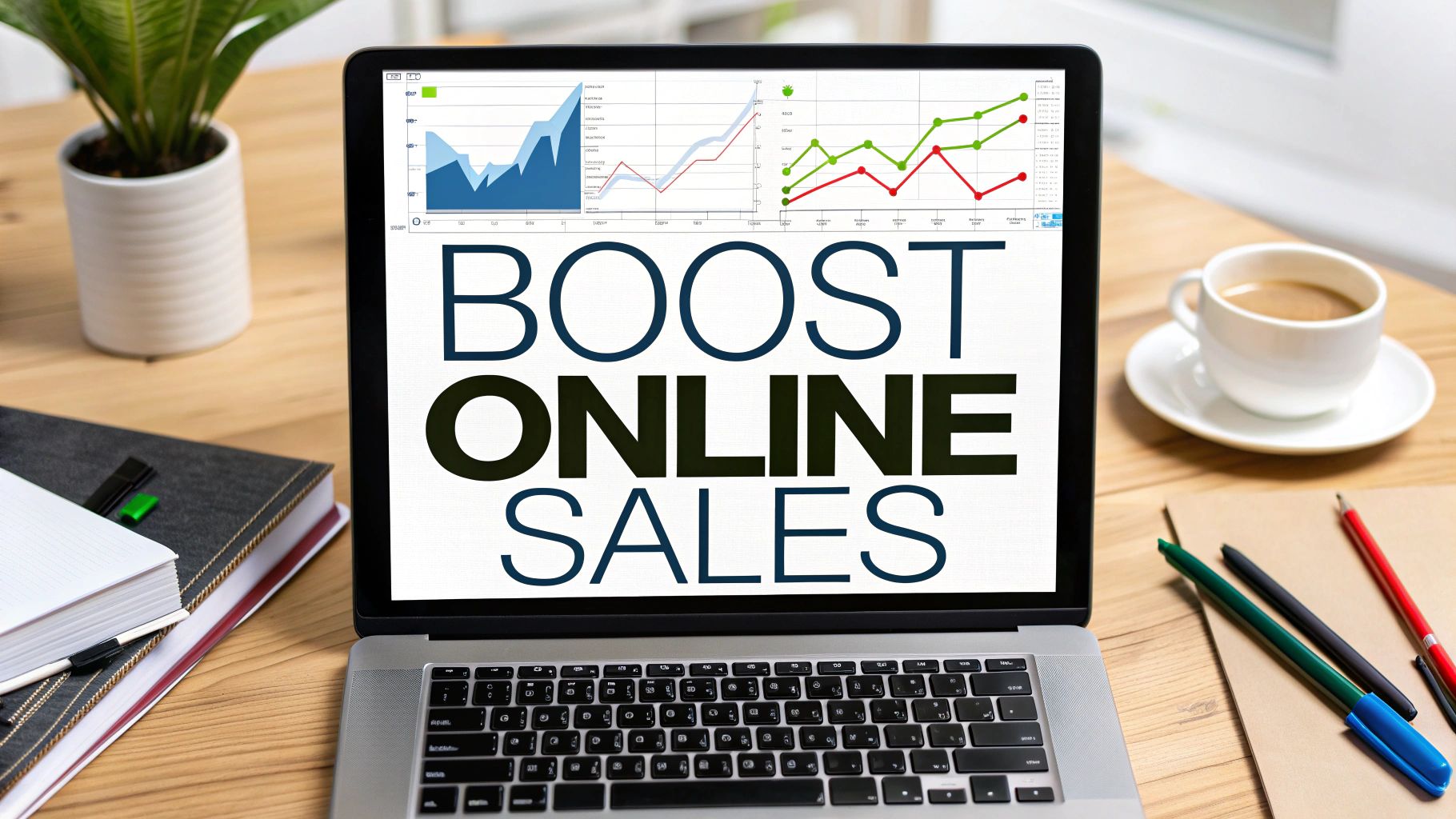




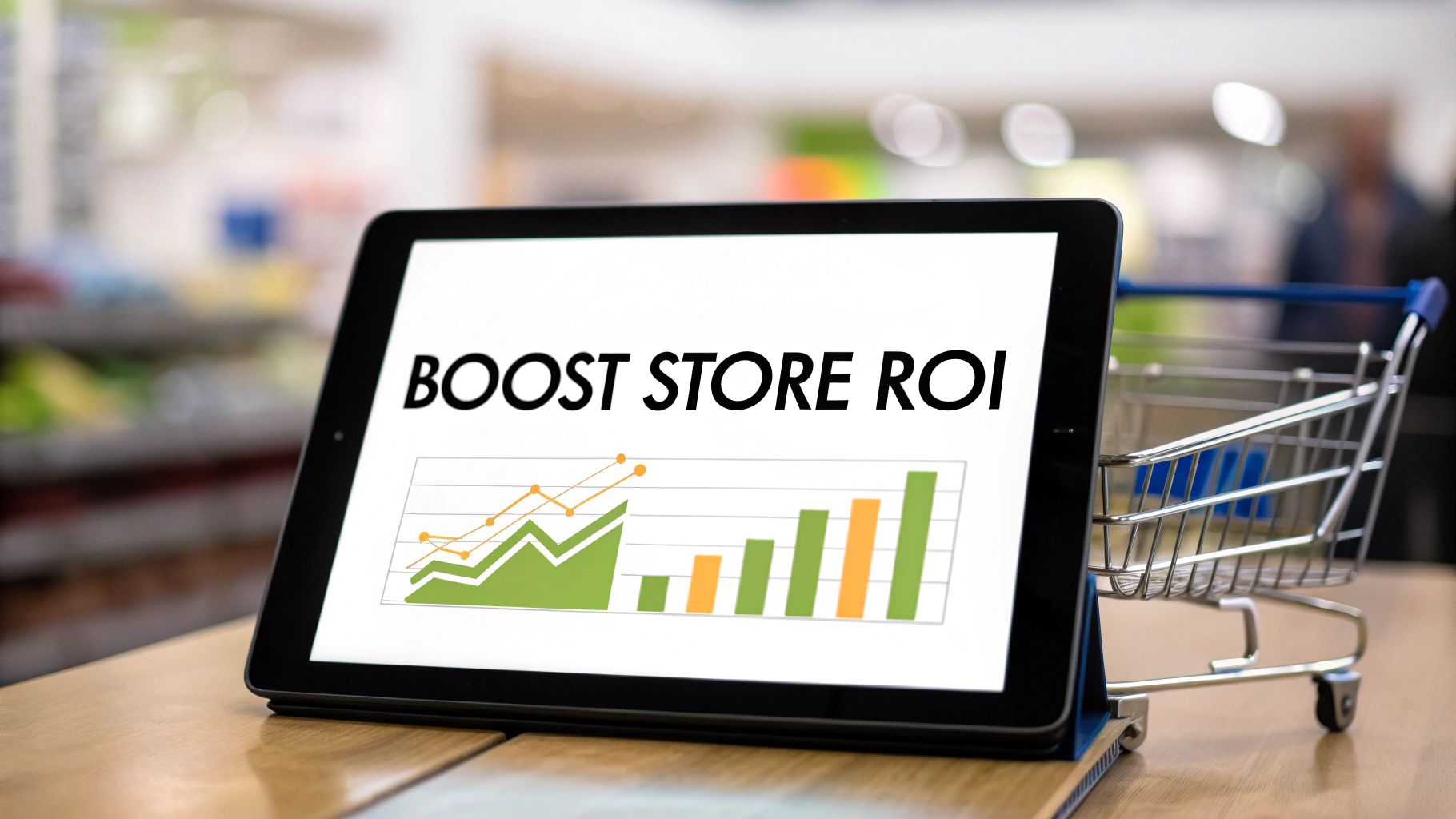
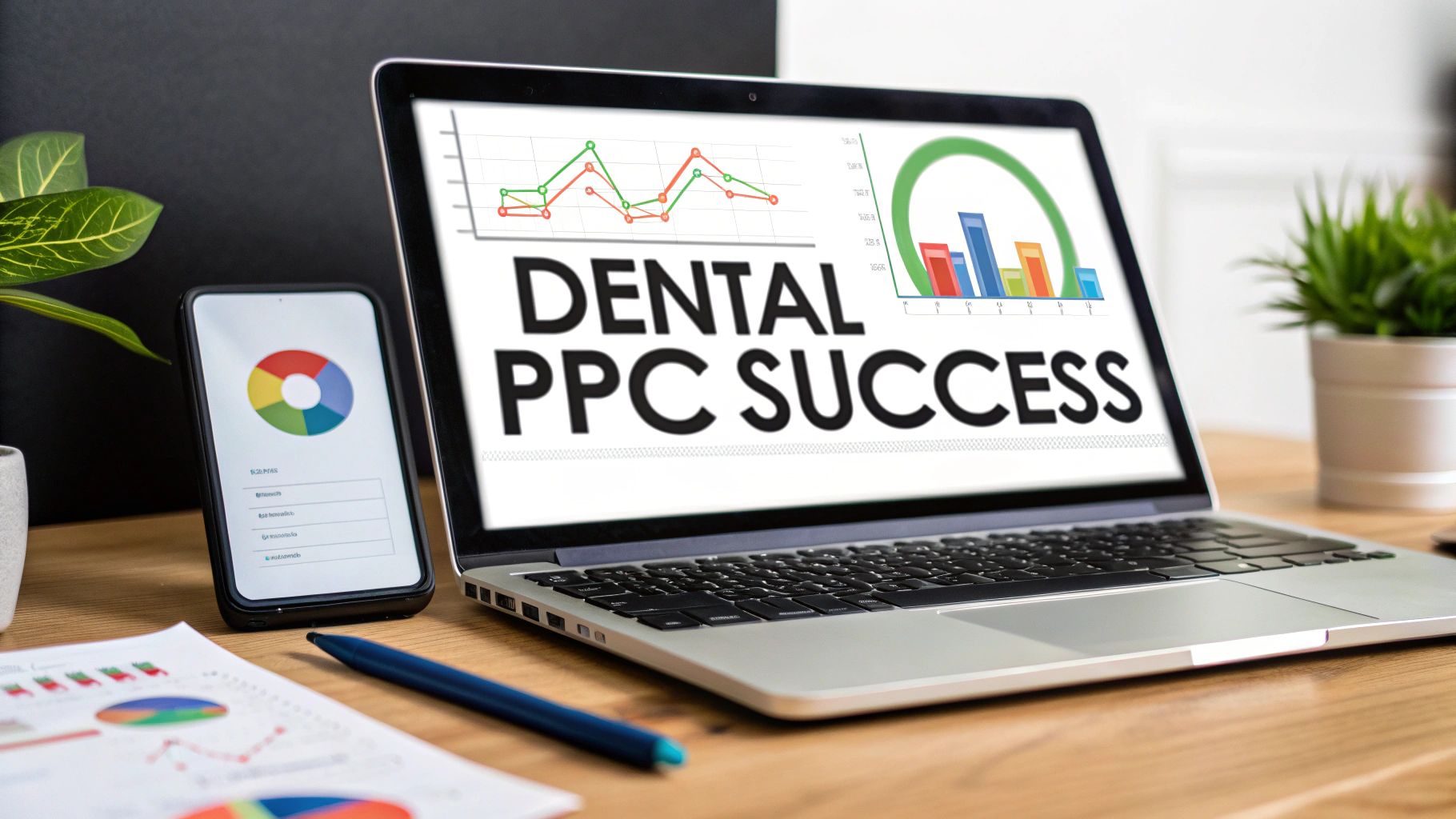
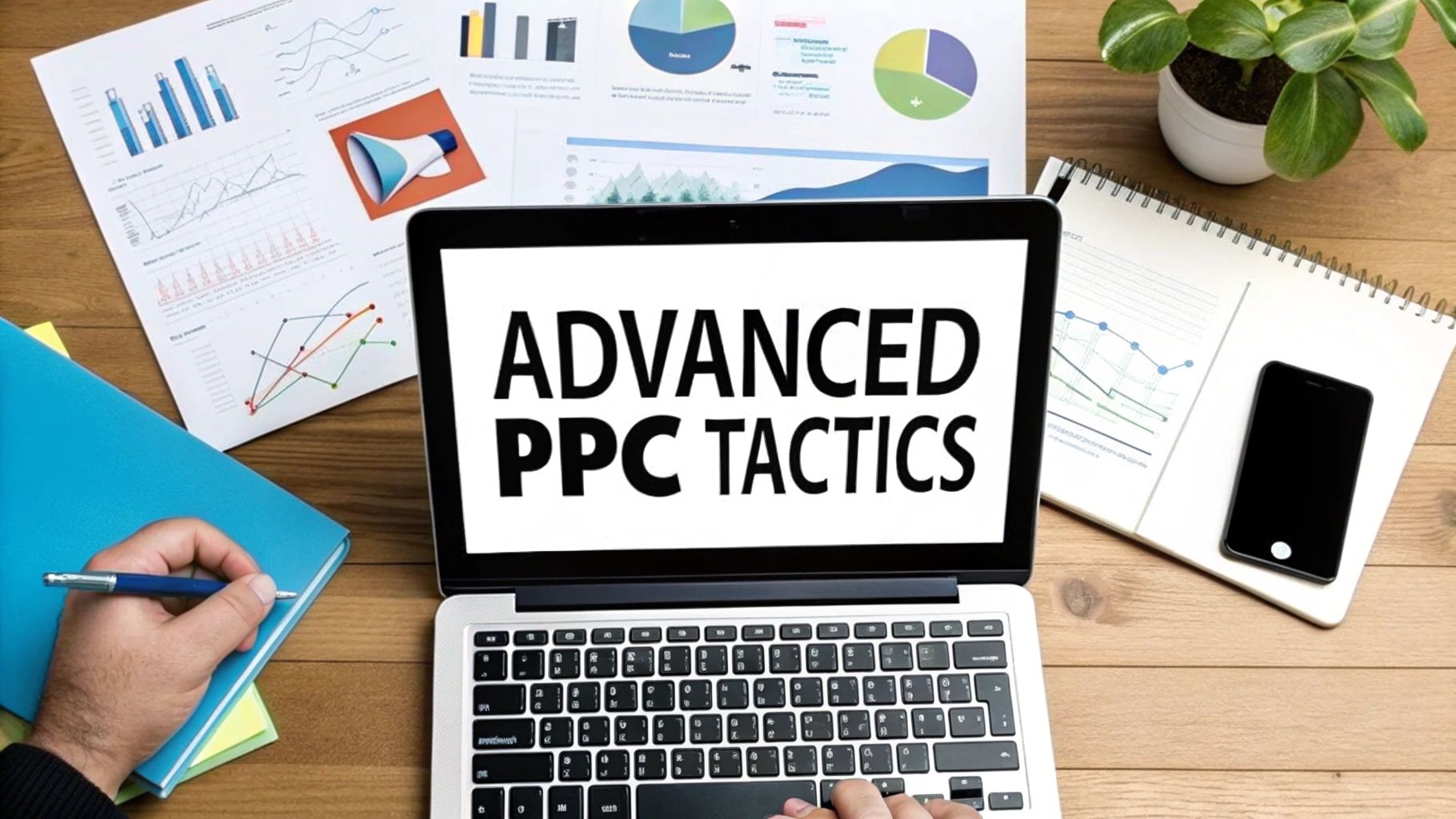
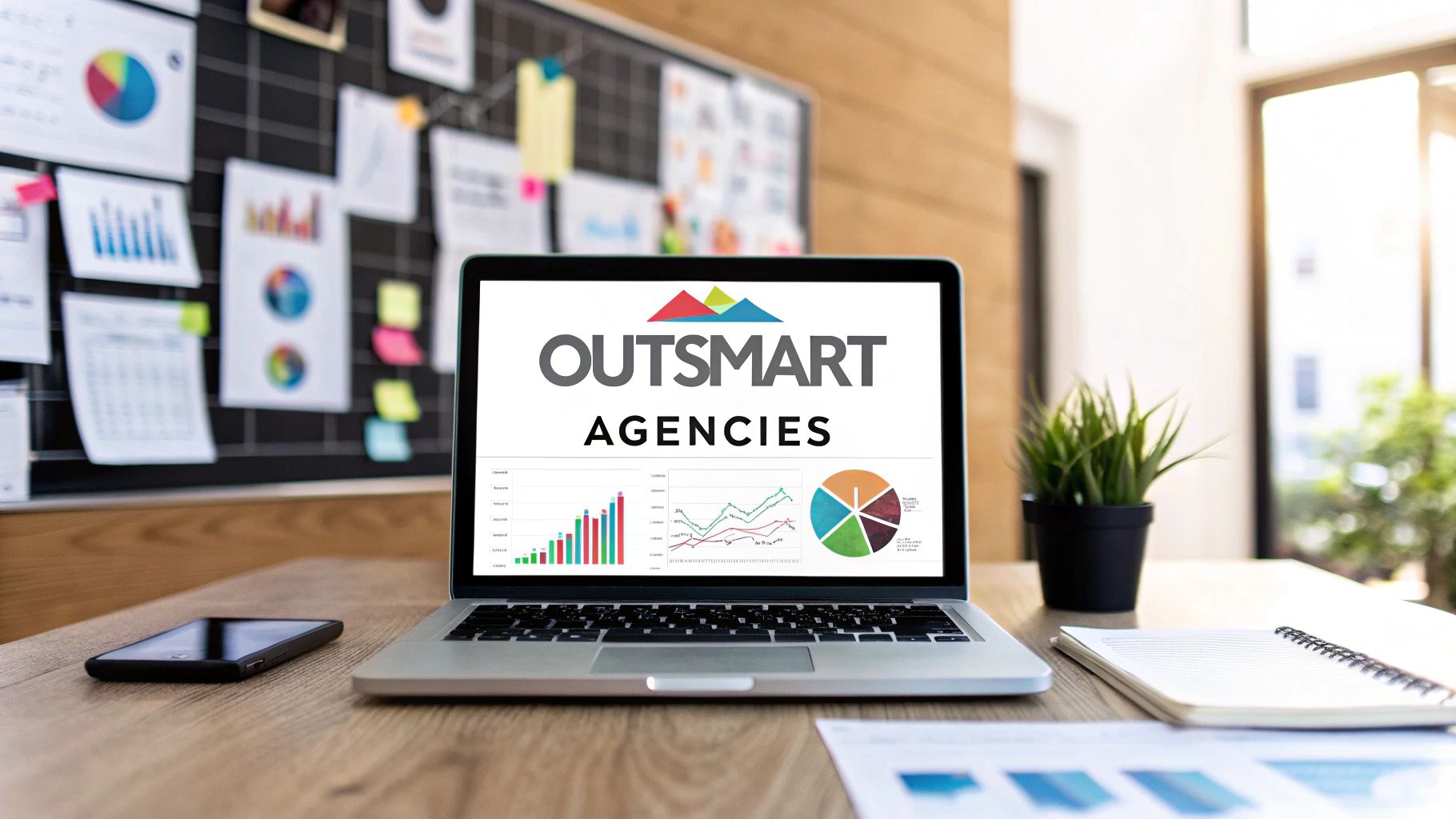

Comments